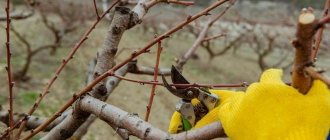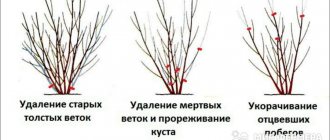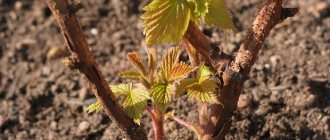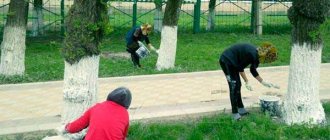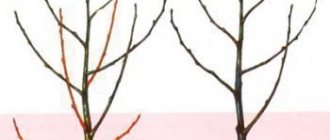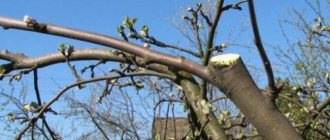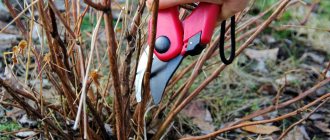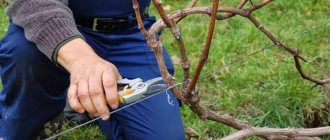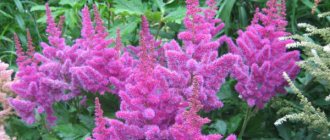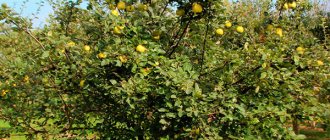When growing ornamental shrubs, a novice gardener may encounter difficulties when pruning jasmine. Whether to carry out this work in autumn or spring, at what age to start, what shape to give to the plant - these and many other questions sometimes do not find an answer. Don't worry, this is an unpretentious plant and easy to care for. The first time may not be successful, the shape of the bush will be uneven, but don’t give up. Take into account the mistakes and repeat the procedure after six months. Each time you will gain experience, and after a while you will be able to compete with a professional landscape designer.
Should jasmine be pruned in the fall?
Pruning jasmine is a very important undertaking, because if this is not done, some shoots can reach 2 m, which will negatively affect the appearance of the crown. Autumn pruning involves removing branches that are deformed and affected by diseases and pests.
Also, before winter, the bush must be prepared for the upcoming negative temperatures and the subsequent spring stage of development. If you want to see a beautiful and tidy plant in your garden, then you need to prune it both in spring and autumn.
The best varieties for landscape design
This perennial shrub can be planted in open ground both in spring and autumn. Seedlings can be purchased in specialized stores - they are usually sold there with a closed root system. And mock orange with an open root system is usually taken either from neighbors in the garden, or propagated independently (most often by cuttings). The root system holds the earthen ball well during transplantation, acclimatization in a new place is tolerated well, and quickly takes root in new conditions.
- The area where this perennial ornamental shrub will grow should be well lit, without stagnant moisture in the soil.
- In the planting holes, a layer of drainage material should be placed at the bottom, consisting of crushed stone with river sand (its height is 12-15 cm), and then a layer of soil mixture. It is composed as follows: mix 3 parts of leaf soil, 2 parts of humus and one part of sand.
- In group plantings, the distance between jasmine bushes should be at least 0.6 to 1.4 m, and when planting these perennials in a single-row hedge, the distance between seedlings should be 0.7-0.8 m.
- The planting depth of young bushes should be no more than 0.5-0.6 m, and the root collar should be at ground level; when buried in the soil, it rots.
Usually this shrub is propagated by cuttings, and cuttings can be rooted both in spring and autumn. The technology of these processes is not very different from each other.
Rooting of garden jasmine cuttings in the fall is usually carried out in greenhouses or specially prepared cuttings. First, in the middle or end of summer, cuttings are taken from green shoots. You can also take cuttings from woody shoots, in which case they are immediately rooted in open ground. The length of the cut cuttings of this perennial should be no more than 5-6 cm, with a pair of internodes and 5-6 leaves.
Mock orange is usually propagated by cuttings
The main nuances of cutting cuttings and rooting them:
- the shoots from which cuttings will be taken should not bloom this season, and also be too thick or overgrown;
- the best shoots for cuttings are small in size, which do not bloom in a given season and have at least a couple of internodes;
- cutting is carried out with a special sharp knife, all other similar tools crush bark and wood, so they are not suitable for this type of work;
- 5 mm below the internode, the cutting is cut at an acute angle, and the upper cut must be straight (the distance from the node is at least 1.5 cm);
- the two lower leaves are removed completely, and the remaining foliage is cut off by at least half;
- in the cuttings in which future seedlings will be planted, the soil should consist of: a mixture of turf and river sand, and another layer of sand 3-4 cm thick is poured on top. Before planting, this substrate must be well watered;
- cuttings of this shrub cannot simply be stuck into the ground. First, use a thick stick to make a hole in the soil no more than 1.5 cm deep, and insert the cutting into it in a vertical position and gently squeeze the soil around it;
- plantings should be carefully watered, you can spray them, and cover the top with film or plastic bottles with a cut bottom;
- Spraying and airing of seedlings should be carried out at least once a day. In this case, they will take root faster.
We suggest you familiarize yourself with How to properly dilute alcohol with glucose at home
After 2-3 weeks, the seedlings will take root, then the cover can be removed.
The best shoots for cuttings are small in size, which do not bloom in a given season and have at least a couple of internodes
Typically, the main pruning of mock orange is carried out in early spring, when the buds on the shoots have not yet begun to swell. At the same time, all frozen branches are removed to healthy wood, and formative pruning of the crown is also carried out to give the shrub the correct shape. But thinning the bushes, as well as sanitary pruning of the bushes, should only be done in the fall.
It is in the autumn period that the bushes are thinned out, which promotes the active growth of new shoots, which in the next season will actively increase the vegetative mass, and will also be covered with beautiful flowers with a pleasant aroma.
After the end of flowering (still in the middle of summer), all old shoots that are more than 5 years old should be cut out, and already a few weeks before the onset of cold weather, all damaged, dried or broken shoots should be removed. But the side shoots that have grown during the season should not be actively cut out - after all, the buds will appear on them next season.
In the autumn, thinning of chubushnka is carried out, which promotes the active growth of new shoots
One of the important positive qualities of this perennial shrub is its rapid adaptation after planting or replanting. This shrub can be replanted at any time, except when the jasmine is blooming. If mock orange is replanted in early spring, flowers will appear on it only in the next season.
The nuances of transplanting this shrub:
- you need to pour a large amount of water into the tree trunk circle (at least two to three buckets) so that you can easily dig it up along with a lump of earth;
- While the moisture is absorbed, you need to carry out sanitary pruning - remove all damaged branches, as well as old ones, shorten young shoots by one third;
- and only then the bush is dug up and transferred to a new hole.
Before planting, at least 20 liters of water are poured into the prepared hole, then the bush is placed and covered with a nutrient mixture. The tree trunk circle should be sprinkled with mulch on top (humus can be used).
To propagate mock orange, several methods are used. In the autumn, the most reliable methods are cuttings and dividing the bush. The technology is quite simple, but in the case of division, special care must be taken so as not to damage the roots.
The main way to obtain a healthy mock orange bush is propagation by cuttings in the fall. The technology is quite simple and accessible even to novice gardeners, and almost all cuttings take root. The main thing is to take into account all the rules at each stage:
- It is very important to choose the right escape. Immediately you need to discard faded, strong (overgrown) branches or too thick shoots. Accordingly, short shoots that have not yet formed flowers are selected. It is enough to have 2 internodes.
- Another rule is that it is important to sharpen the knife very well in order to make a perfect cut (the fibers should not be wrinkled).
- One cut is made obliquely – 5 mm below the node. The second cut is 15 mm above the node. It is direct, i.e. perpendicular to the shoot.
- All leaves are trimmed almost to the base - you need to leave from a quarter to a third of the leaf.
- The substrate is made from sand, peat (in equal mass quantities) and drainage (expanded clay or broken brick).
- Immediately before planting, it is better to keep the cuttings in a stimulant solution, immersing them in a glass overnight.
- Planting is carried out either in a greenhouse or in open ground, but then they are covered with a plastic container.
- The drainage is poured to the bottom in a layer of 5-7 cm. This is followed by already moistened peat and sand. The topmost layer (3 cm) is pure sand, without any mixture.
- Next, pour out a solution of any fungicide and plant the cuttings, pre-treated with a root formation stimulator (you can simply dip the cut into powder). A very important point is that the cuttings need to be planted at a noticeable slope (40°), and the lower leaves should not be in contact with the ground.
- Planting is carried out no later than mid-August, since rooting requires a minimum of 4-6 weeks. At the same time, you need to ensure that the soil is always moist and the place is lightly shaded.
We suggest you read: When to plant garlic in the fall before winter - favorable days
NOTE
By dividing the bush, mock orange can be propagated both in spring and autumn. The procedure is also carried out in August (until mid-August). The main requirement in this case is to carry out all actions carefully, because the roots of the mother bush can be easily damaged, which will cause the mock orange to begin to hurt. The technology is as follows:
- First, you need to water the bush generously and wait several hours for the moisture to be completely absorbed into the soil.
- Then the bush is dug up, carefully separating the roots and shaking them off the ground.
- The plant is divided into several parts, and the tips of the shoots and roots are trimmed.
- After this, you need to immediately plant the bush in a predetermined place so as not to replant it again.
- The bush needs to be planted up to the top pair of buds, and then pressed down with soil.
- After planting, you need to water the bush generously again.
Pruning for mock orange is very important, because thanks to this procedure you can not only significantly improve the appearance of the bush, but also improve its health. Removing half-withered or dead shoots helps circulate water and nutrients to healthy parts of the plant, allowing it to grow faster.
The pruning technology is simple, the whole procedure is carried out with sharp pruning shears (garden saws will not work):
- First of all, you can start pruning no earlier than 3 years after the bush was planted in a permanent place. The reason is that it is after three years that jasmine produces flowering branches.
- For sanitary purposes, all dead and weak shoots are removed in early spring so that the plant has time to recover by the beginning of the period of active growth. And in the fall they do the so-called formative, or decorative, pruning.
- Initially, you need to outline how tall the tree will be - usually choose no more than 2 meters, so that it is convenient to care for all the shoots.
- Since jasmines that are too dense do not bloom at all or produce very few flowers, the main purpose of pruning is to thin them out. To do this, remove all branches that have not produced flowers in recent years, as well as those that are twisted, diseased, and obviously dead.
NOTE
Thus, the rules for caring for mock orange are quite simple. And if you take these tips into account, you can survive the winter period with virtually no losses.
When to perform the procedure
The crop should be pruned at the end of September. Weather conditions outside, as a rule, during this period are most suitable for this procedure. Do not delay cutting the plant. The shrub has a rather fragile branch structure and at temperatures below -5°C, young shoots can be seriously damaged during pruning.
If you were not able to complete the renewal and formation of the crown before October, then you need to navigate by weather conditions - the procedure must be performed on warm and dry autumn days.
Pruning jasmine after flowering
Mock orange blooms until mid-summer, then the inflorescences dry out and look ugly. To maintain decorativeness during this period, light pruning is carried out.
What is cut out in the summer:
- A sharp instrument is used to remove fading and dried flowers, of which there are many on properly grown jasmine. The sections are not processed.
- Very long branches that worsen the appearance of the bush are slightly pruned in order to correct its shape. This is done to stimulate the growth of lateral branches on which new flowers will form.
- If present, remove dried and broken branches that prevent the jasmine from developing normally.
Garden jasmine is pruned after flowering for different purposes: improving decorativeness, easy contour adjustment, and for sanitary purposes. The diagram below shows the approximate location of future cuts.
List of required tools and materials
To prune jasmine, you need to prepare the necessary tools and materials in advance. After all, the wrong choice of equipment can have a detrimental effect on the plant after cutting. Young shoots should only be cut with sharp cutting tools.
To prune a bush you need to prepare:
- pruner;
- garden var;
- hacksaw;
- lopper;
- special oil for cutting.
Types and rules of pruning
Before pruning mock orange, be sure to consult with an experienced gardener, because this procedure has many nuances and rules. There are also different types of haircuts. They will be discussed in more detail below.
Crown formation
Jasmine is easy to form a crown. To achieve the desired result, branches should be pruned throughout the growing season. It is important that weak shoots do not block the access of sunlight to strong shoots. Branches that thicken the crown should be made shorter or removed. This scheme allows the shrub not to waste its supply of nutrients on useless plant fragments.
Since the crop is often planted to create hedges, borders along walkways, labyrinths, etc., the plant must be lush. To maintain density and form dense foliage on the crown during pruning, thin shoots should be removed and thick shoots slightly shortened. As a result, the bush should acquire a thick and even crown.
The shrub is widely used in landscape design due to its ease of crown formation. For example, the top of a plant can be flat, wavy, in the form of towers, etc. It all depends on the style in which the site is decorated. If the shrub is planted on a playground, the plant can be given the shape of a ball or the outline of an animal. Kids will really like this “decoration”.
Sanitary
This type of pruning will ensure healthy development and a neat appearance of the plant. At the beginning of autumn, always inspect the bushes for dry and damaged branches. They not only spoil the appearance of jasmine, but also create an obstacle to the proper development of young shoots.
Therefore, it is very important to regularly carry out sanitary haircuts, starting from the third year after planting. Do not leave cuttings of plant parts on the site for a long time; it is recommended to burn them to prevent the invasion of insect pests or the occurrence of fungal diseases.
In spring, immediately after flowering, it is necessary to remove dried flowers. There is no need to treat the wounds; they are small and cannot harm the mock orange. If this is not done in time, then wilted inflorescences can later turn into a source of various infections that will become detrimental to the crop.
Types of procedure. Dates
Caring for mock orange (garden jasmine) is not very difficult. As is the case with other crops, it is important to do everything on time. Pruning jasmine is a mandatory procedure, without which the bush will not bloom beautifully. But this is precisely why he is valued.
By the way. In the evening, mock orange buds open even more, so their smell becomes richer.
Timely pruning helps control the density of the crown and generally gives the bush a healthy, well-groomed appearance. Depending on what goal the gardener is pursuing, the procedure has different purposes. Accordingly, the timing and pattern of pruning change. Main varieties:
- Formative. Thanks to it, the bush takes on a beautiful, symmetrical shape. You can prune at any time of the year, excluding winter. During the work, you need to remove weak, thin, elongated shoots, as well as those that thicken the crown. Proper pruning stimulates the development of lateral branches. With its help, it will be possible to form a crown in the form of a ball, pyramid, etc.
- Sanitary. This procedure is usually postponed until spring. The gardener needs to remove diseased, broken branches that have frozen over the winter. If they are not severely damaged, not complete pruning is allowed, but shortening to the first living bud.
- Rejuvenating. It is carried out rarely, once every 6-7 years. The event is relevant if the age of the mock orange exceeds 12 years, and many old, bare branches stick out from the crown of the bush. Deadline: spring, before the buds swell.
- After flowering. The main goal is to maintain the decorative appearance of the bush. Pruning is performed in the second half of summer.
Autumn care for garden jasmine: pruning and other activities
Garden jasmine, or, as it is more correctly called, mock orange, is valued by gardeners for its abundant spring flowering and the pleasant aroma emitted by its numerous flowers. The shrub is unpretentious and unpretentious, but in order to maintain its decorative value at the maximum level, it must be cared for throughout the growing season, including in the fall.
Features of care and preparation for winter
Jasmine is a perennial shrub, but in order for it to always delight with its beauty and delicate aroma, it needs nutritious soil. Lush flowering can only be achieved if it is saturated with minerals and nutrients. The plant also needs regular, abundant watering, and, of course, pruning. There are three types of it:
- Sanitary.
- Rejuvenating.
- Formative.
In the spring, formative pruning is carried out, thickening branches and shoots frozen in winter are removed. Rejuvenation is carried out once every 5-8 years, since the old branches will no longer produce such lush flowering. Sanitation is carried out in the fall.
You may be interested in:
Pruning an apple tree: when and how to do it correctly Apple trees are among those fruit trees that love abundant natural light and do not tolerate stagnant air...Read more...
Autumn care for jasmine
During the critical autumn period, mock orange needs the following activities:
- pruning;
- watering;
- cleaning;
- feeding;
- preventative treatment;
- shelter for the winter.
Well-groomed mock orange bushes are distinguished by especially abundant flowering
Video: a little about mock orange
Bush pruning
The main activities for pruning mock orange are carried out in early spring, trying to do it before the sap begins to flow and the buds open. In the autumn, sanitary, thinning and light rejuvenating pruning is carried out . This must be done before the onset of frost, at a temperature not lower than -4...-2 °C, otherwise the wood freezes, becomes brittle and breaks easily.
In autumn, sanitary and light anti-aging pruning is carried out.
Autumn pruning of jasmine is done as follows:
- First cut:
- dried, broken and damaged branches;
- twisted and deformed stems;
- shoots with traces of damage from insect pests or diseases.
- Old branches (more than 5–6 years old) that no longer bloom are cut out.
- The shoots that are too far from the borders of the bush are cut out to the very base.
Unnecessary root shoots are removed
Remove all unnecessary branches and branches growing inside the bush
In late autumn, when the plant is at the end of the growing season and is preparing to go to sleep, radical rejuvenation of old bushes can be carried out. To do this, cut out all the branches right down to the ground, leaving no more than 5-6 young, strong and strong shoots. They should be shortened to 50–60 cm. The cut areas must be treated with a special putty or garden varnish.
Experienced gardeners recommend making cuts with a sharp garden tool (lopper, secateurs, saw, etc.) at an angle of 45–50°. In this case, moisture will not accumulate in the wounds, which will significantly reduce the risk of infection and subsequent rotting of the wood.
The cut should be made at an angle of 45–50°
Old jasmine bushes tend to send out a lot of root shoots, often quite far from themselves. On our site, mock orange grows near the lawn. All summer we have to cut jasmine shoots along with the grass. In the fall, just before the cold weather, I always walk along the edge of the lawn with a hedge trimmer and remove unnecessary jasmine branches that remain out of reach of the lawn mower.
Video: autumn pruning of mock orange (garden jasmine)
Watering jasmine in autumn
Autumn watering is also included in the list of measures for caring for jasmine in the fall, since this crop loves good moisture. The last time the bushes are watered is 2-3 weeks before the onset of cold weather.
In autumn, if there is little or no rain, the bush needs to be watered
Watering is reduced or stopped altogether if it rains.
Video: why autumn watering is needed
Feeding jasmine in autumn
The final feeding of mock orange is carried out approximately 10–15 days before or after pruning, but not earlier than two weeks. There should be 20–30 days left before the onset of frost, while sap flow has not completely stopped. Otherwise, the plant will not have time to absorb the nutrients, and before spring they will simply decompose in the soil.
In the autumn, jasmine needs fertilizing with a high content of potassium and phosphorus
Fertilizers of the potassium-phosphorus group are applied to the bushes:
- superphosphate - 25–30 g;
- potassium sulfate - 15–20 g;
- wood ash - 100–150 g.
All substances are taken per 1 bush. The granules are scattered in a circle near the trunk, embedded a little in the ground and watered with water.
Fertilizers are scattered under the bushes
Cleaning under bushes
It is necessary to rake all fallen leaves, weeds and other plant debris under and around jasmine bushes, since pathogenic microorganisms are preserved in organic debris and harmful insects settle for the winter.
In autumn, it is necessary to collect all plant debris (leaves, branches, etc.) and burn it.
All cut branches and collected leaves must be burned.
Preventative treatment
After pruning, mock orange bushes are sprayed against pests and diseases for preventive purposes:
- Bordeaux mixture (1%);
- copper sulfate (2%).
In the fall, it is necessary to carry out preventive spraying of bushes against pests and diseases.
Shelter for the winter
Jasmine is considered a frost-resistant crop, so in warm southern regions with mild winters the shrub is not covered in any way. Plants cultivated in more northern regions with harsh climatic conditions need insulation. To protect the root system from frost, a layer of mulch (15–20 cm) of peat, humus, pine needles, etc. is poured under the bushes.
Jasmine bushes are mulched with humus, peat or pine needles
Newly planted seedlings and bushes that are not yet 3–4 years old are wrapped in agricultural material and tied with rope.
Young jasmine bushes are wrapped in agro-cloth for the winter
The flowering of the shrub in the next season depends on proper autumn care of the mock orange and its preparation for wintering. A special place in this is occupied by pruning, which must be carried out annually, otherwise the plant will quickly lose its decorative effect.
Is it possible to prune mock orange in the fall?
A shrub called mock orange from the Hydrangeaceae family, which is often also called garden jasmine, is prone to rapid growth. Therefore, the plant needs mandatory pruning, and it can be done not only in spring, but also in autumn.
After the end of the flowering period, shortly before the onset of cold weather, the shrub enters a state of dormancy. A video of mock orange pruning in the fall confirms that it is possible to cut it during this period - it is quite safe if you follow proven recommendations.
Pruning jasmine in autumn - diagrams and fundamental principles
Garden jasmine is an unpretentious crop, but to maintain its decorative properties it must be pruned regularly. When grown spontaneously, old branches do not allow young shoots to develop properly and are not able to bloom as profusely as before. Damaged and weak branches become breeding grounds for pests and parasites. To avoid unnecessary problems, you should systematically pay attention to planting every year.
Mock orange tolerates pruning procedures quite easily, so you can form a bush or hedge of jasmine by shortening the shoots in any month during the summer season. In the spring, parts of the plant damaged during the winter are removed - broken branches and frostbitten young shoots.
Sanitary pruning of jasmine in the fall is the most important, and therefore the main one. Its main goal is to prepare the bush for wintering. In order for the crop to easily survive the cold, all old branches should be carefully cut down. They will no longer bloom, but they take away most of the plant’s energy and strength and absorb nutrients from the soil.
It is also necessary to rid the bush of diseased branches damaged by insects. Otherwise, they will live under its bark throughout the winter, and with the onset of the spring thaw they will resume their parasitic activity.
Not only mock orange needs formative pruning, but also indoor jasmine growing in a flower pot.
First, you should make sure that the garden tools used for pruning plants are well sharpened. This is important, since dull tool blades can damage the shoots and will not allow you to make a neat, even cut. To cut down old branches in the fall, you will definitely need to use a hacksaw - a pruner will not cope with this job properly.
- 1. All damaged and dried shoots are cut off, and then old branches that thicken the bush and are incapable of flowering. Usually these are stems that have reached 5 years of age.
- 2. Jasmine is given the desired shape by shortening plant fragments in those places where they go beyond the established boundaries of crown development.
- 3. Wilted but not fallen inflorescences should also be carefully cut off.
If during the process serious cuts with a surface area exceeding 2-3 millimeters appear, it is recommended to treat them with garden varnish to prevent infection by fungus or freezing during the first frost. The procedures are carried out strictly before the air temperature drops to -8–10 degrees.
In addition to autumn pruning, before the onset of vegetative dormancy, jasmine needs to be fertilized with phosphorus-potassium fertilizers. This could be, for example, wood ash and a portion of superphosphate specified in the manufacturer's instructions.
Formative pruning is an important element of caring for jasmine bushes. If the mock orange was unevenly illuminated during the summer, then by autumn its symmetry may be broken due to the uneven density of the crown. To correct this, you need to shorten the shoots on the thickened side of the plant.
To prevent weakened shoots from shading strong branches, they are shortened by 1/2 the length. If they do not play any role in the formation of the crown, they can be cut off completely. In this case, the plant will be able to produce many new strong shoots.
Advice for novice gardeners on creating a jasmine hedge: each time, slightly shorten all existing shoots. This stimulates the growth of the green part of the bush, and it will be completely covered with foliage.
You can create a wide variety of shapes from mock orange bushes - balls, pyramids, cones, animal figures - they are easy to shape. The only thing is that it is important to promptly trim branches that extend beyond the edges of the shape - they give the plantings an unkempt appearance.
If the abundance of flowering on a mock orange shrub begins to decrease with each season, and the green mass does not increase even after applying nitrogen fertilizers, this means that the bush has aged. If such a situation arises, two solutions are possible: planting new cuttings or rejuvenating adult jasmine.
Usually, with proper care, the bush develops a strong root system over the years of its life. If it is healthy, then the best option would be to stimulate the appearance of new shoots from it. Such a plant will undoubtedly become stronger than a young bush. But in order to activate their growth, it is necessary to cut off the old unsightly crown.
When cutting down adult branches and stems, cuts should be made at an angle of 45–50 degrees - this will prevent the possible appearance of rot and the proliferation of bacteria. It is advisable to immediately treat all resulting mock orange wounds with garden varnish to quickly restore the damage. This will allow the plant to gain strength and sprout new shoots as soon as possible.
The optimal time for anti-aging pruning would be early spring or late autumn - the period of vegetative dormancy. Several pairs of the strongest and youngest shoots are selected and cut down at a height of half a meter from the ground. The rest of the crown is destroyed to the ground, leaving no stumps.
Next spring, after a year of pruning, young shoots will appear on the remaining branches of the jasmine bush. At this moment, it is important to feed the plant with nitrogen fertilizers for the development of green mass of the crown. By the end of the spring season, it is necessary to cut off the resulting shoots without regret, leaving 3-4 of them on each branch, so as not to burden the crop.
You can feed rejuvenated mock orange every 10 days using compost and ash. In addition, jasmine will need abundant watering, periodic loosening of the soil and mulching of the tree trunk. By creating favorable conditions for the plant and maintaining its health during this difficult period, within a couple of years the shrub will become stronger and will continue to delight the owner with its fragrance and abundance of flowering.
How to prune in the fall
Autumn pruning is formative, carried out to remove root shoots, damaged, broken stems and diseased shoots. The gardener must remember that on the eve of winter, the volume of the cut should be no more than 20% of the total above-ground mass of the plant, otherwise active growth of root shoots in the fall is possible. All young shoots will inevitably die in winter, which will cause infection of the adult bush.
Before the operation begins, you need to approximately create a model of the plant after it
It is important to determine what lilacs should be like in the garden - spreading, compact, tall or not very tall. To create a lush crown you need 6-8 main shoots
If the bush is planned to be tall but not dense, leave 3 central ones. To maintain symmetry, pruning leaves even branches growing in different directions. Failure to comply with this rule will lead to one-sidedness of the bush, which is very difficult to correct; the only option for salvation is total cutting in winter.
In the first year after planting, all weak, crooked and damaged shoots are removed from the seedling. If a plant has two branches of the same size growing in the same direction, cut off one of them. The branches coming from the base of the plant are shortened by a third or half the length. Ideally, all shoots of the plant should be the same length.
In the fall of the second year, the first, full haircut is carried out. The main branches are not touched. Shoots grown on skeletal branches are removed, leaving only strong ones, maintaining uniformity. General pruning removes a third of the growth. They work according to the same scheme in subsequent years until the required crown of the bush is obtained.
Trimming schemes
For pruning lilacs, 2 schemes are used.
The first involves the formation of a crown, and the second involves the removal of fading flowers, with the rejuvenation of the branches. It is recommended to prune the crown in order to stimulate its growth and gain mass in the spring, sacrificing flowering during the season. The largest branches are pruned three times. Immediately after formation, empty areas may appear in the crown, noticeable after the lilac blooms - this is normal. Pruning of inflorescences is carried out immediately after flowering. It is necessary for laying flower buds for the next season. If faded inflorescences are not removed, flowering will not occur and flowering will be sparse or not occur at all.
Attention!Pruning of Persian lilacs is carried out in the fall. These varieties do not form fruits and seed pods, so pruning will only be beneficial.
Required Tools
To perform pruning you need:
- pruner;
- double-sided pruning shears;
- lopper;
- scissors;
- garden file;
- gloves;
- garden knife;
- soft padding under the knees.
You may be interested in: How to prune viburnum in the fall for beginners in pictures step by step. Prompt pruning of viburnum in the fall will ensure the growth of the central part of the plant.
Active fruiting -...Read more... When choosing tools, pay attention to:
- maximum sharpness;
- safety;
- ease of use;
- tapered blade edges;
- strength and lightness.
Before carrying out work, all tools are treated to prevent the spread of pests, bacterial, viral and fungal plants throughout the garden.
Why do you need to prune jasmine, what is the difference between autumn and spring pruning?
When growing ornamental shrubs, a novice gardener may encounter difficulties when pruning jasmine. Whether to carry out this work in autumn or spring, at what age to start, what shape to give to the plant - these and many other questions sometimes do not find an answer. Don't worry, this is an unpretentious plant and easy to care for. The first time may not be successful, the shape of the bush will be uneven, but don’t give up. Take into account the mistakes and repeat the procedure after six months. Each time you will gain experience, and after a while you will be able to compete with a professional landscape designer.
Why does jasmine need pruning?
When approaching many summer cottages, you can feel a strong but pleasant aroma. It is produced by a lush bush strewn with white flowers - garden jasmine. An ornamental plant adds charm to a flower garden, looks great in hedges, and it becomes unclear why such a beautiful flower was given the dissonant name - mock orange. Perhaps this word came out of a man harvesting wood for pipe chibouks at the sight of wild, gnarled bushes with old cracked branches, a too thick but uneven crown and stunted inflorescences.
Jasmine is unpretentious, it can grow without any care, but its decorative qualities are reduced. Old trunks do not allow new shoots to develop properly; frozen and broken branches serve as a haven for pests and a breeding ground for infections. Poorly developed young shoots will not be able to produce many buds, flowering will be weak. Uneven branches will not add charm to either the flower garden or the front garden, and overgrown plants planted close to each other will resemble an impenetrable jungle.
If you allow jasmine to grow freely, some shoots can reach a height of 2 m. Long branches sticking out in different directions look sloppy. Such bushes are not suitable for landscape design or hedges. Old trunks do not bloom, but they deprive young shoots of light and nutrients. Instead of lush white caps, rare small flowers will appear on the bushes. Anyone who passes by such thickets will get the impression that the site is abandoned and the owners are not taking care of it at all.
Sanitary pruning
The main pruning of mock orange is carried out in the spring to improve the appearance of the shrub. Most often, this is done before the buds open in the middle of the first spring month, but dead shoots can be cut out before the flowering period.
What does sanitary pruning include:
- removal of frozen shoots (if the crown is very thick) or parts thereof (cut to living wood);
- shortening broken branches: it is important not to forget that pruning most of the shoots negatively affects the splendor of the mock orange’s summer flowering.
When carrying out sanitary pruning of garden jasmine, it is necessary to examine the crown for excessive density and decorativeness. For dense bushes with an ugly shape, it is advisable to combine a sanitary procedure with a shaping one.
Dry and broken branches are cut out throughout the summer. For sanitary purposes, jasmine is also pruned in the fall when preparing the plant for winter.
When is the best time to prune jasmine?
Jasmine easily tolerates pruning, so shoots that violate the shape of a bush or hedge can be shortened throughout the entire summer season. In the spring you need to inspect the bush, check what damage was left by the winter cold.
Before the buds swell, you should do spring pruning, which includes:
- cutting down old branches;
- removal of frozen and broken shoots;
- crown formation;
- rejuvenation of the bush.
Over the summer, the jasmine will grow, some branches will be damaged by diseases and insects. You cannot leave the plant in this form for the winter. In the fall, you need to prepare the bush for wintering and spring development. To ensure that decorative bushes always look neat, they need to be pruned annually in both spring and autumn.
After flowering, a number of procedures should be performed:
- remove faded inflorescences;
- thin out the bush, removing old trunks;
- remove damaged and diseased fragments.
In the fall, you not only need to prune, but also feed the jasmine for the winter. Plan this work in advance, since you can apply fertilizer either before pruning or 2 weeks after the procedure. Do not delay removing old branches - the work must be done before the temperature drops below -10⁰ C. The plant’s wood is fragile, and removing frozen fragments can injure young shoots.
The very first pruning should be done immediately after planting, and it does not matter when this happens: in spring or autumn. Immediately think about what shape you want to give the jasmine, determine which shoots are growing in the wrong direction, and remove them. Leave no more than 3 trunks on which the strongest buds are located. Cut off the rest mercilessly - the bush will gain splendor over time, and the newly appeared shoots in the open space will begin to actively develop and will be covered with flowers next year.
When and how to prune lilacs
It is necessary to remove old branches or excess shoots from the bush, since otherwise the flowers will cover mainly the upper part of the plant, and its decorativeness will decrease.
It is important to choose the right time for the procedure. Spring is not a good time for crown formation, as the stress of pruning can reduce or even stop flowering that year.
Therefore, it is better to postpone the procedure until after flowering or autumn.
However, this does not mean that plants do not need attention in the spring. Before the buds awaken, you need to carry out sanitary cleaning: remove all dry or damaged branches, as well as shoots with signs of disease
This will help maintain the health of the bush throughout the growing season.
Trimming schemes
There are several schemes for pruning this shrub. One of them is aimed at forming the crown, and the second is aimed at rejuvenating the old plant. Let's look at each of them in more detail.
To form a crown you need to do the following:
- Wait until flowering is complete and remove all faded buds;
- Long branches must be shortened by a third;
- Remove all excess root growth and thin out shoots growing close to the ground.
If the bush has become too wide, it is necessary to additionally remove weak and thin side shoots. As a result, you should get a compact plant with a rounded crown. It is better to carry out this procedure after flowering, and not in the spring, so that the bush does not weaken and can form buds (Figure 1).
Figure 1. Classic scheme for the formation and rejuvenation of a bush
In the case of old shrubs that require rejuvenation, they act differently. Without exception, all branches are shortened so that their length from the surface of the ground does not exceed 40 cm. Shoots located near the surface of the ground are thinned out or completely removed (if the branch is old). If you are not interested in flowering this year, rejuvenation can be done in early spring, otherwise pruning is done after flowering is complete.
In fact, after rejuvenation, the bush will not look very attractive, since only small stumps will remain on it. But after 2-3 years it will be overgrown with young shoots and again covered with lush inflorescences.
Required Tools
To carry out the procedure, you will need a standard gardener's kit: pruning shears for removing young shoots and thin branches, a hacksaw for cutting large diameter parts, as well as garden varnish or oil paint for treating the resulting wounds.
It is important that all instruments are clean, sharp and disinfected. Otherwise, an infection may get into the cut, which can destroy the plant.
How to properly carry out autumn pruning?
Prepare everything you need in advance. When pruning in autumn or spring, you will have to remove thin branches and cut down strong trunks. If you use unsuitable tools, you can damage young shoots. Sharpen all cutting edges well; dull blades will not give an even cut.
You will need the following equipment:
- hacksaw;
- pruner;
- lopper;
- garden pitch or special putty for cuts.
The operating scheme is easy to remember. First, all diseased, dry and damaged fragments are removed, then old shoots and branches that grow incorrectly or thicken the plant. When everything unnecessary has been removed, give the plant the desired shape.
Once flowering is over, remove any dead flowers. The wounds during this procedure remain small and do not need to be treated. If wilted inflorescences are left, they can become a source of infection and give the bush a sloppy appearance. Freed from dry fragments, jasmine will decorate the area with a green crown until late autumn.
In the fall, cut down all trunks that have reached five years of age. Do not damage the young branches that grew this year - next season they will produce the bulk of the buds. See if there are any crooked, broken, dry or diseased branches left, and destroy them too. If the bush is illuminated unevenly, it may look one-sided. Trim the shoots so that the density becomes uniform. Remove branches that are too long and extend beyond the crown. Cover all wounds with garden varnish; it will protect the tissues from the penetration of fungi and other infections.
For beginners, it is important to learn how to give jasmine a symmetrical shape. During the first years, make sure that the bush is even, and after gaining experience, you will be able to give it the shape of a ball, cube, pyramid, and even animal figures.
Autumn pruning is the time to prepare cuttings for propagating the bush. For this purpose, annual shoots are removed along with part of the old trunk. Cut them into 5 cm cuttings, each with 2 internodes and several pairs of leaves. Do not forget that under the internodes you need to make a cut at an acute angle, and above the bud - horizontally. Remove the planting material to the basement until spring and store at zero temperature.
Crown formation
Using formative pruning, the crown of garden jasmine is given the desired shape. Specimens that grow rapidly upward are limited in height, and their crowns are thinned out. This pruning is carried out at the end of March. It is carried out as needed. If the plant produces a relatively small increase and retains its decorative appearance for a long time, crown formation is carried out once every 3-4 years.
If the crown density is high, 3-4 oldest branches should be cut from the middle of the bush. They give little growth and interfere with the development of the entire plant. They are removed by sawing them out at ground level. Thick branches going inside the crown also need to be removed.
Very tall jasmine bushes in the garden do not look aesthetically pleasing. To limit their growth, you need to shorten all branches pointing upward by half. The side shoots that grow after such pruning will form many buds in the upper part of the bush.
Unsightly jasmine outlines are also easy to correct. To give the plant a uniform and regular shape, you need to shorten the largest and longest branches, cutting them in half. The remaining shoots should not be shortened in order to obtain a profusely flowering bush this year.
Forming the crown
Formative pruning of mock orange should be carried out throughout the season, including in the fall. To prevent weak shoots from thickening the crown and taking away light from strong branches, thin branches are shortened by half or completely removed. If the plant does not waste nutrients on the development of useless fragments, it will produce many new shoots in the spring. In the first season they will have only dense green foliage, but the next year lush flower caps will bloom.
If you are using the shrub to create green fences, good formative pruning of jasmine is essential. Borders along paths, flower screens around benches, and labyrinths of bushes should be smooth and dense. Remove thin branches and shorten strong shoots slightly - they will give a lot of foliage, and the hedge will be lush. The shoots grow quickly, and after a while, instead of a clear surface, you will see branches sticking out in different directions, giving the plantings an unkempt appearance.
The top of a green fence does not have to be flat. You can make waves, turrets, ledges - it all depends on the design style of your summer cottage. In a flowerbed, the bush can be shaped into a ball or cube; in the playground, children will be delighted with animal figures or toys.
For the first time, you can invite a specialist to do a decorative haircut, then you will trim the bushes according to his pattern.
Formative pruning
It is carried out throughout the year if:
- the bush has an irregular and ugly shape;
- grows up very quickly;
- Jasmine has a thickened crown.
Rapid, uneven upward growth of shoots disrupts the symmetry of the bush and spoils its beauty. The thickened crown does not allow sunlight and fresh air to pass inside, suppressing the awakening of flower buds on the internal shoots. Formative pruning allows you to give the bush the desired shape and cause the development of new shoots, which will have many flowers by next year.
How to rejuvenate old bushes?
When you notice that the foliage is no longer growing so luxuriantly, the branches look bare and unattractive, you need to understand that the bush has aged. It is not necessary to uproot the jasmine and plant new cuttings; you can rejuvenate it. Perennials have a strong root system, and if it is healthy and working well, young shoots will grow vigorously. You only need to give an incentive for the appearance and development of new branches, and for this, first of all, you should remove the old crown.
When cutting branches and trunks, it is better to make a cut at an angle of 45⁰, then the wounds absorb less water, which causes rotting and serves as a source of proliferation of harmful microorganisms. After pruning, be sure to treat the wounds with garden varnish.
The best time for anti-aging pruning is spring, before the buds begin to swell. If you are late with this work, you can do it in the summer, but not during the flowering period. But it’s better to postpone it until the fall. Select 4-5 of the strongest and youngest shoots, cut them at a height of 0.5 m from the ground surface. Cut down the remaining trunks to the ground. In spring, the bush will produce young branches that will be covered with green leaves. In April or May, when new shoots appear, remove them, leaving no more than 3 branches on each trunk. In a couple of years, lush young jasmine will bloom under your window.
After pruning garden jasmine, treat all wounds with garden varnish. To regain strength after surgery, the plant requires good nutrition. But if you haven't fed the bushes before the procedure, now is not the right time to do it. Give the plant a couple of weeks to get stronger, and then feed it with manure or compost. After the spring procedure, the bush needs to quickly gain strength. Feed it once every 10 days, water it well, and mulch the soil under the crown.
If you have an unsightly, unkempt mock orange bush growing on your property, pruning it will turn it into a beautiful garden jasmine. In the fall, a gardener has a lot to do: he needs to harvest and process the crop, prepare the beds for the new season, and protect delicate plants from the cold. Take the time to feed and trim your ornamental shrubs. In the spring, green leaves will bloom on it, and in the summer the entire crown will be covered with beautiful fragrant white flowers.
How to prune old jasmine
The presence of many bare shoots on a bush indicates the need to take drastic measures. Such stems do not produce growth and almost do not grow buds, which worsens the appearance of jasmine.
Did you know? The shrub acquired its Russian-language name in ancient times, when shoots with cavities were used to create mouthpieces and pipe stems for smoking pipes.
To renew the crown, pruning is carried out in early spring, provided that the mock orange is 12 years old.
The procedure can be repeated every 6-7 years, which is performed in the following sequence:
- First, all shoots that are 10 years old or more are sawn down to ground level.
- Dry, thin and poorly developed branches are also cut out.
- Having selected 4-5 of the strongest young branches, they are pruned, leaving 35–45 cm, and all the rest are removed completely.
- The cut areas should be treated with garden putty or crushed coal.
Video: Pruning old jasmine
Garden varnish can be purchased or prepared independently. In the second case, the following components will be useful:
- paraffin - 7 parts;
- colophon resin (rosin) - 4 parts;
- vegetable or mineral oil - 3 parts.
The paraffin is melted, rosin crushed to a homogeneous fine dust is added to it and the mixture is left until it boils, and then the oil is poured in. The resulting mass is left to simmer for another 15–30 minutes, and then allowed to cool so that it can be kneaded until smooth. The above recipe is the most popular type of homemade garden putty, but there are a large number of variations with different ingredients, you can find them on the Internet.
You may be interested in reading about the beneficial properties of jasmine tea.
Upon completion of the pruning process, it is advisable to mulch the soil near the jasmine and water it with liquid manure.
To ensure rapid recovery and gain of green mass, it is recommended to thoroughly moisten the bush. Within a year after the procedure, young shoots will begin to appear, which it is better to get rid of immediately or thin out next spring, leaving 4-5 branches cut to 35–45 cm on the frame. In summer, young branches will appear on the trunk, which will begin to bloom within a year.
Pruning is a mandatory procedure that can heal and rejuvenate jasmine. Timely implementation can restore the former beauty of even a withering bush. The main thing is to ensure proper care afterwards, and abundant flowering will not be long in coming.
